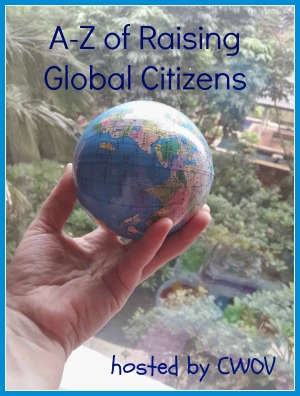
[Wikimedia/Rursus (public domain)]
Don’t Sweat the Details
Many adults avoid the topic of religion. Abstract, confusing, and fraught with pitfalls, conversations about faith seem destined to produce discord and division. Who needs that at the start of summer?! Some of us have issues with our own religious upbringing, and we certainly don’t want to pass that baggage along to our children. Some of us find other religions interesting, but we worry about mispronouncing words or providing inaccurate information. Some of us simply dread the inevitable complications. There’s Tibetan Buddhism and Zen Buddhism, not to mention Sunni Islam and Shia Islam. Hindu holidays and practices are regional, which means different people celebrate different things in different ways at different times! Honestly, it’s enough to make even the most high-functioning parent head for the hills.
The most important thing to remember is that none of that stuff matters, especially when it comes to kids. We’re not training theological scholars! They don’t need to know about denominational and sectarian divisions, and you don’t have to address atrocities committed in the name of religion. What kids need to know – as global citizens – is that there are different ways to articulate the sacred. At their best, religions provide a path for achieving love, peace, and compassion. They provide a language for thinking about that which is divine and for discovering the divine in ourselves, in others, and in nature. They provide methods for exploring the depths of our beings and for soaring beyond what we can easily touch. Those are the aspects of religion we need to honor and embrace.
From a more practical standpoint, people of faith celebrate certain holidays, wear distinctive clothes, eat special foods, and participate in specific rituals. That’s what kids love to hear about and that’s what we should be sharing with them. Parents and caregivers simply need to explore along with their kids in an open-minded and open-hearted way. The world would be so much less interesting if there were only a single culture. The same is true for religion. And since culture and religion are intertwined, being a global citizen means going beyond mere tolerance. We must teach our kids to appreciate, respect, and admire the religions and faith practices of the world. It’s probably much easier than you think to accomplish.
Read Books
Why reinvent the wheel when the list of great reads for kids gets longer every day?! At Faith Seeker Kids, we are particularly fond of books that talk about several traditions in a single title. Here are few of our favorites:
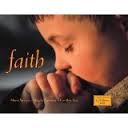 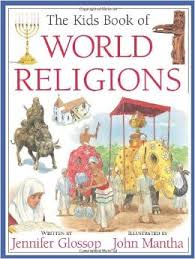  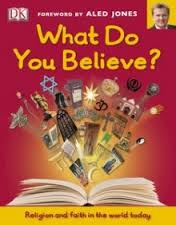 |
Faith (Global Fund for Children Books) by Maya Ajmera and Cynthia Pon
The Kids Book of World Religions by Jennifer Glossop and John Mantha
A Faith like Mine: A Celebration of the World’s Religions through the Eyes of Children by Laura Buller
What do you Believe? by DK
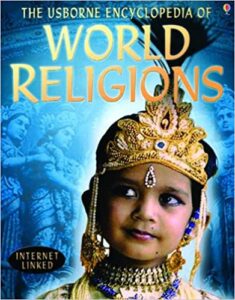 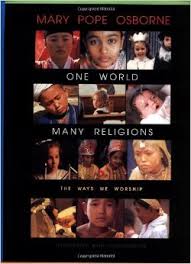 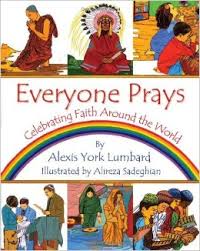 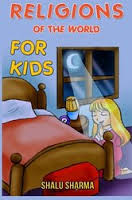 |
The Usborne Encycolpedia of World Religions by Susan Meredith and Clare Hickman
One World, Many Religions: The Ways We Worship by Mary Pope Osborne
Everyone Prays: Celebrating Faith around the World by Alexis York Lumbard and Alireza Adeghian
Religions of the World by Shalu Sharma
You can also do internet searches for books on particular religions (e.g. Judaism, Buddhism, Islam) or specific holidays (e.g., Diwali, Ridvan, Ramadan, Sukkot, Brigid). Bookmark this Interfaith Calendar to keep track of Holy Days from around the world. You will be amazed by the wealth of resources out there for kids of all ages.
Make Crafts
I still have the Christmas tree ornament I made in my kindergarten Sunday school class – a sparkly picture of an angel glued onto a canning lid with a pipe cleaner through the top for hanging. Luckily, Christians do not have a monopoly on crafts! Every faith tradition uses crafts to teach kids about holidays and other practices. There are sand mandalas from Buddhism, Purim masks from Judaism, clay figures of Ganesha from Hinduism, corn dollies from Neo-Pagans, prayer mats from Islam, and prayer beads and coin boxes from various traditions. And that’s just the tip of the iceberg!
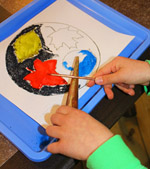 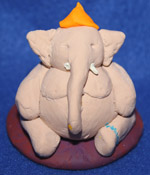 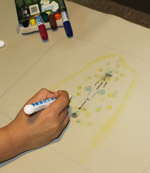 |
Here are some of our favorite crafty links:
Bahai: Enable Me to Grow
Judaism: Creative Jewish Mom
Native American: World Crafts – Native American
Islam: 101 Funtastic Ramadan Crafts – Muslim Homeschool Blog
Neo-Pagan: Arts and Crafts from the Pagan and Wiccan Parenting Page
iChild’s Religion and Culture section probably has the best ideas for Hinduism, Buddhism, and Sikhism. But we all know you can never have too many craft ideas. If you’re making great religious-themed crafts with your kids, post them!
Cook Together
Special times call for special foods! Every faith tradition enjoys treats – usually sweet ones! – during the holidays. Thanks to the burgeoning foodie industry, the web is full of kid-friendly recipes and meal plans. Here are a few sites focused on specific religious traditions.
Hindu: Holy Day Recipes from eCurry (scroll down for some great links)
Jewish: Holiday Recipes from PBS Food
Islam: Ramadan/Iftar Recipes
Conclusion
The important thing is to get started! Begin by focusing on topics and activities within your comfort zone and go from there. Religion is about the sacred, but that doesn’t mean it has to be boring or scary. You’re allowed to have fun! Kids already know that, which makes them the perfect teachers for us.
More on the Raising Global Citizens A-Z series
